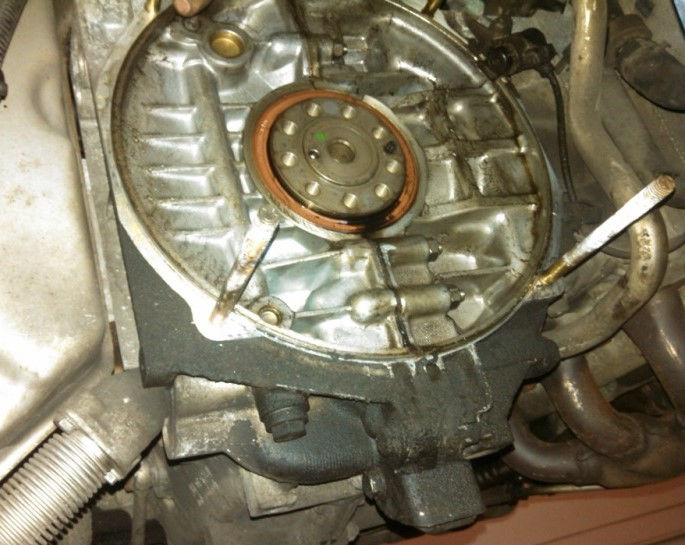Porsche Rear Main Seal Leak: Causes, Symptoms, and Affected Models
- Andrew Aragon

- May 7
- 3 min read

Rear main seal failure is a common issue in many Porsche vehicles, particularly in the Porsche 911 (996) and other models equipped with the M96 and M97 engines. The rear main seal is a vital engine component that prevents oil from leaking where the crankshaft exits the engine and meets the transmission. A rear main seal leak can result in oil loss, increased consumption, and, if left unaddressed, serious engine or transmission damage. The rear main seal was redesigned by Porsche a number of times, which improved the reliability but it never really solved the problem fully.
What Is the Rear Main Seal in a Porsche?
The rear main seal sits at the back of the engine block and ensures a tight seal around the rotating crankshaft. This seal is critical in keeping engine oil contained while allowing the crankshaft to function smoothly. When the rear main seal fails in a Porsche 911, especially in 996 models, oil can leak into the bell housing between the engine and transmission, leading to reduced oil levels and potential clutch contamination in manual transmission vehicles.
Porsche Models Most Affected by Rear Main Seal Issues
Rear main seal leaks are most frequently reported in Porsche models equipped with M96 and M97 engines. These include:
Porsche 911 (996 and early 997 models, 1999–2008)
Porsche Boxster (986 and early 987 models, 1997–2008)
Porsche Cayman (2006–2008 models with M97 engines)
While newer Porsche vehicles (2010 and later) have improved seal designs, rear main seal failure can still occur in high-mileage or poorly maintained cars.

Common Symptoms of a Rear Main Seal Leak in Porsche Vehicles
Identifying the early signs of a rear main seal leak is crucial to prevent major repair costs. Watch for the following warning signs, especially in Porsche 911 996 and similar models:
Visible Oil Leak at the Rear of the Engine
Oil dripping between the engine and transmission area
Small oil spots appearing underneath the parked car
Increased Oil Consumption
More frequent need to top off engine oil
Oil level warnings without other visible leaks
Clutch Contamination (Manual Transmission Models)
Slipping or chattering clutch due to oil-soaked components
Burnt oil smell near the transmission

When Should You Replace the Rear Main Seal?
Since replacing the rear main seal involves removing the transmission, it's most cost-effective to address it during other major maintenance procedures. Consider replacing the rear main seal during:
Clutch replacement (manual models)
Flywheel servicing or replacement
IMS bearing upgrade, especially for Porsche 996 and Boxster 986 models
Timely attention to a rear main seal leak can help maintain the performance and reliability of your Porsche, particularly high-risk models like the Porsche 911 996.
Maintaining a European vehicle doesn’t have to be costly. Be it a Porsche, Volkswagen, Audi, Mercedes Benz or Volvo, with regular upkeep and professional checkups, you can significantly extend the life of your vehicle and keep repair costs manageable. Routine maintenance helps you stay informed about your car's health and allows you to address common issues before they escalate into major problems.
If you encounter any issues with your European vehicle or have any concerns, don't hesitate to reach out. As the premier European vehicle repair specialists in Tucson, Stuttgart Autohaus offers expert service and are here to address your questions and ensure your vehicle runs smoothly.











댓글